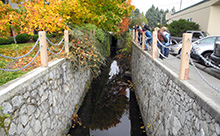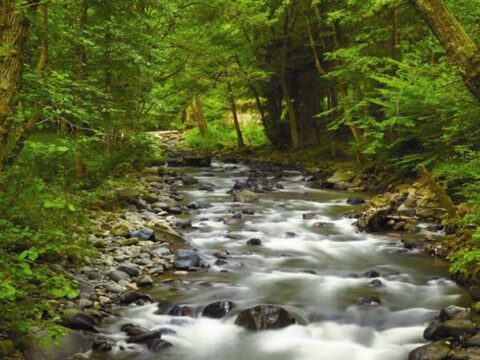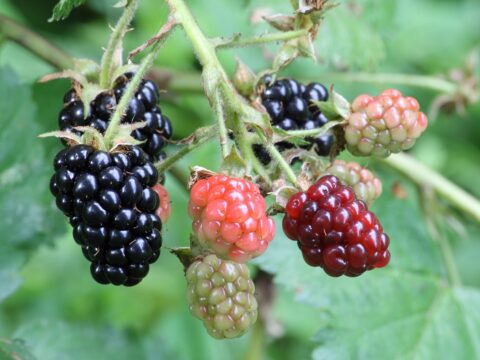
By OB16
Most of Bowker Creek's watershed is composed of impervious surfaces, which causes water to travel straight into storm drains, instead of being soaked up by vegetated areas. Storm drains are connected to bodies of water, becoming contaminated by surrounding surfaces such as automotive oil runoff that find their way to the watershed, polluting water.

By OB6
Most of the berries at Bowker Creek are edible, but some are not...

By OB4
This summary outlines our findings from research and testing of the Bowker Creek water quality.

By OB3
A healthy habitat can benefit wildlife by there being no pollutants that could potentially be fatal. Even if it is very healthy it can have a negative impact. If there is a build up of nitrogen or phosphorus there can be a algae bloom which block natural light from getting in.

By OB16
Bowker Creek has been artificially deepend/ straightened with cement and rock. Due to this, Bowker Creek has been separated from its floodplain and destroyed. Leading to, the floodplain has been converted to urban land and the creek has increased flow speed, resulting in erosion. No riparian zones are left and excess water isn't soaked up.

By OB16
Unfortunately, Bowker Creek suffers from many environmental concerns, here are some of the main ones, which will been gone into further detail in the next entries:
-
Stream channel degradation
-
Impervious surfaces
-
Habitat loss and degradation
-
Water quality
-
Flooding and safety
-
Invasive species

By OB6
If you have ever walked along Bowker Creek, or even just around Oak Bay, you will notice many blackberries. There are so many in fact that they are smothering the native plants. These invasive plants block out the light for native plants, causing many of them to die. Although these berries are delectable, and are very nutritional, they are interfering with biodiversity at the creek.

By OB10
Many native plant medicines have been found that can treat some common colds, viruses, fevers, and even diabetes. One study counted almost 550 plants that could be used medically that some Canadian First Nations used - The plants cured close to 30 different sicknesses. Sadly the passed down knowledge of these plants is disappearing because less people are relying on the teachings to survive.
